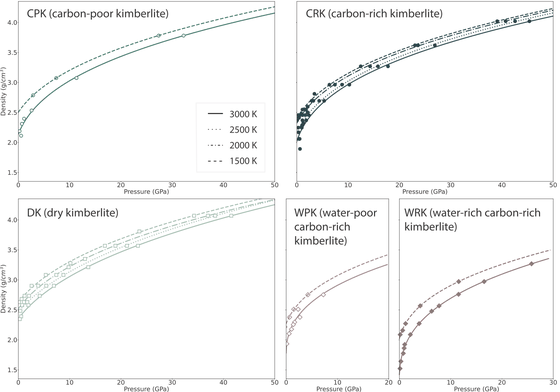How diamonds are transported to the surface without turning into charcoal

Diamonds are found mostly in
Why Do 70% of Diamonds Come From One Bizarre Type of Volcano?
https://scitechdaily.com/why-do-70-of-diamonds-come-from-one-bizarre-type-of-volcano/
Buoyancy of volatile-rich kimberlite melts, magma ascent, and xenolith transport
https://pubs.geoscienceworld.org/gsa/geology/article-abstract/53/11/919/660734/Buoyancy-of-volatile-rich-kimberlite-melts-magma
Kimberlite, which contains diamonds, forms deep in the Earth's mantle and is transported to the surface at speeds exceeding 100 km/h. The diamonds reach the surface without being carbonized because they are protected from alteration by the rapid ascent. However, the composition of the magma that forms kimberlite and the mechanism by which it rises so rapidly have remained a mystery.
A research team led by Dr. Anna Anzurvich of the University of Oslo used a computer model to analyze the conditions that trigger the rapid ascent of kimberlite. Using molecular dynamics simulation software, they modeled the atomic forces in molten kimberlite deep within the Earth, tracked the movement of atoms with depth, and determined whether the molten kimberlite retained sufficient buoyancy to rise through the mantle.
By varying the ratio of volatile substances such as carbon dioxide and water, the researchers calculated that at least 8.2% carbon dioxide was needed for the diamonds to rise; below this, the diamonds would remain trapped in the mantle and would not be able to reach the surface.

Furthermore, the researchers found that each volatile plays a different role: water increases the fluidity of magma, carbon dioxide contributes to structural formation under high pressure, and near the surface, it gasifies and creates upward flows. The most volatile-rich compositions were found to be able to transport up to 44% of the mantle peridotite to the surface.
'It was surprising to observe that even in a small-scale model, without adding carbon, kimberlite magma would be heavier than stable continental crust and would be unable to rise,' said Dr. Anzurubic. 'Modeling the chemical composition of kimberlite is extremely significant as it can help us understand large-scale phenomena on a global scale.'
Related Posts:
in Science, Posted by darkhorse_logmk







